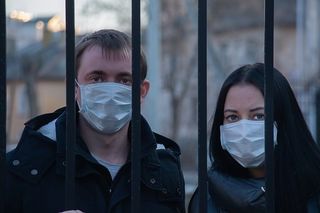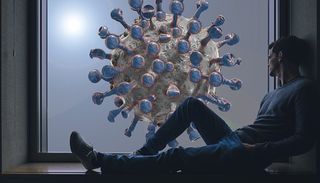Sex
Don’t Count on a COVID-19 Baby Boom
Despite the hype, I’m skeptical.
Posted March 24, 2020 Reviewed by Gary Drevitch

What to call them? Coronials? Quarantine Generation? Nine months from now, should we expect a worldwide surge of babies, from all the sex that’s happening between people stuck at home under shelter in place and self-isolation orders.
Maybe not.
This is a rare time when I find myself gently disagreeing with my friend and fellow PT blogger, Justin Lehmiller, who was cited heavily in this article talking about why people in quarantine are so "horny."
Online, there’s a big surge in things such as quarantine porn, and tweets about people reporting how sex-starved they are, as well as revealing that they are getting contacted by ex-partners, desperate for hook-ups. And perhaps there is a surge in such things, but it’s still unlikely, in my opinion, that there will be a baby boom in nine months.
First, the legend that there is a baby boom nine months after any natural disaster has been debunked, repeatedly. The idea that “blackout babies” are born from the desire to couple for comfort in the dark of an electrical outage just doesn’t hold up. Nine months after 9/11, there was not a nationwide surge in births. It’s unfortunate, really, as I referenced this phenomenon in one of my books, in which I identified it as an example of healthy coping using sex. Unfortunately, it turns out to be an urban myth.

The thing is, there’s a lot more going on right now than just healthy, horny people trapped at home. There’s much more complexity, which gets in the way of sex:
- People are stressed, frightened, anxious and near panic. We are at home, waiting for our loved ones to get sick, worried about our jobs, our mortgage, our older relatives, and our personal safety. There are some people who experience increased sexual arousal in response to surges of depression and anxiety, which is a component of the Dual Control Model of Sexual Response, developed by Bancroft and Janssen. The model argues that our sexual functioning is influenced by both excitatory and inhibitory processes, leading us to feel increased or decreased sexual arousal, sometimes in response to contextual cues. However, it is believed to be a minority of people who experience marked increase in sexual arousal to anxiety and emotional disturbance.
- Most people trapped at home are trapped with their existing sexual partners, not with people who are “potential” sex partners. This makes for a subtle but important difference. The “excitement” of fear of death does increase people’s interest in sex. This has been demonstrated in past research, such as the famous roller-coaster experiments, in which people who had just ridden a roller coaster reported higher levels of interest in sex and dating. But there’s a hitch: The effect is evident toward strangers, and not toward existing partners. Evolutionary psychology theorists make a lot out of this, suggesting that it represents an effect of people pursuing mating opportunities with strangers, and chances to make new genetic pairings. So, people trapped at home with their existing partners are unlikely to have an excitatory effect, leading to a mating drive. Perhaps a grand experiment such as on the “Wife Swap” reality show could demonstrate increased sex, if such a thing were safe in this time of social distancing.
- People aren’t trapped at home alone; they’re home with their kids, because schools are closed. And those kids are anxious, bored, confused, and desperate for emotional support. Anyone who’s a parent knows that this isn’t a dynamic conducive to lots of sex.
Honestly, I hope and wish that people were having more sex right now. These are lonely, scary, and anxious times, and sex is the best possible way of getting emotional and physical support. There is a hope in sex, for love, connection, acceptance, and future. And we all need more hope right now.
Facebook image: wavebreakmedia/Shutterstock


